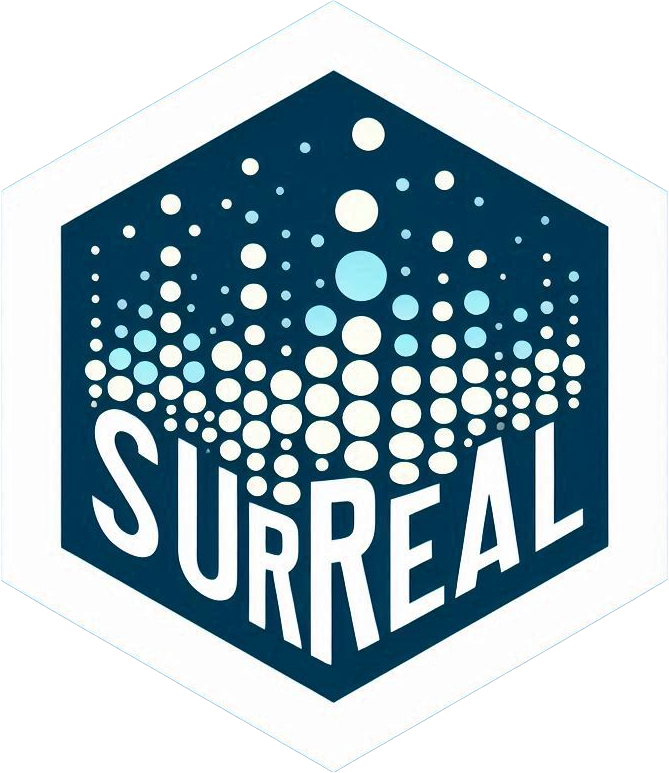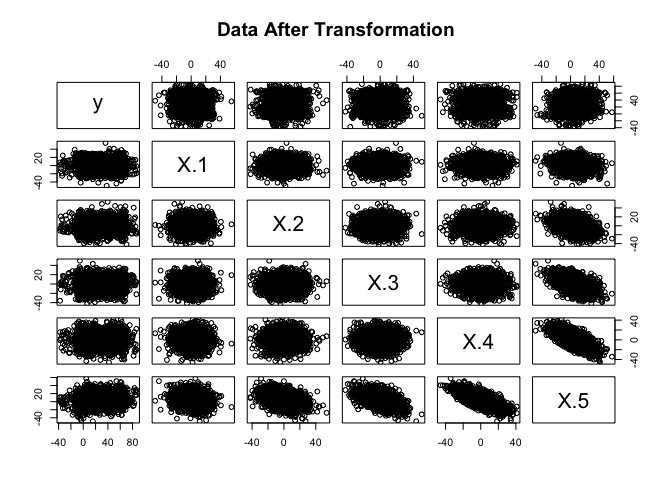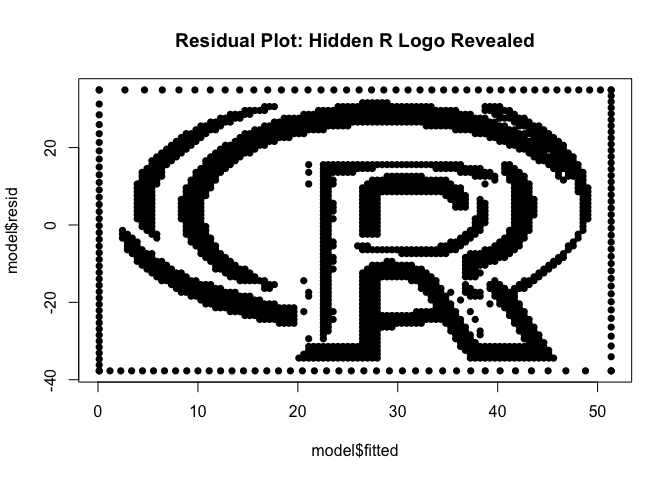

surreal implements the “Residual (Sur)Realism” algorithm
described by Stefanski (2007). This package allows you to generate
datasets that reveal hidden images or messages in their residual plots,
providing a novel approach to understanding and illustrating statistical
concepts.
You can install the development version of surreal from GitHub with:
# install.packages("remotes")
remotes::install_github("coatless-rpkg/surreal")First, load the package:
library(surreal)We can take an image with x and y
coordinate positions for pixels and embed it into the residual plot.
As an example, let’s use the built-in R logo dataset:
data("r_logo_image_data", package = "surreal")
plot(r_logo_image_data, pch = 16, main = "Original R Logo Data")
The data is in a 2D format:
str(r_logo_image_data)
#> 'data.frame': 2000 obs. of 2 variables:
#> $ x: int 54 55 56 57 58 59 34 35 36 49 ...
#> $ y: int -9 -9 -9 -9 -9 -9 -10 -10 -10 -10 ...
summary(r_logo_image_data)
#> x y
#> Min. : 5.00 Min. :-75.00
#> 1st Qu.: 32.00 1st Qu.:-57.00
#> Median : 57.00 Median :-39.00
#> Mean : 55.29 Mean :-40.48
#> 3rd Qu.: 77.00 3rd Qu.:-24.00
#> Max. :100.00 Max. : -9.00Now, let’s apply the surreal method:
set.seed(114)
transformed_data <- surreal(r_logo_image_data)The transformation adds predictors that appear to have no underlying patterns:
pairs(y ~ ., data = transformed_data, main = "Data After Transformation")
Fit a linear model to the transformed data and plot the residuals:
model <- lm(y ~ ., data = transformed_data)
plot(model$fitted, model$resid, pch = 16,
main = "Residual Plot: Hidden R Logo Revealed")
The residual plot reveals the original R logo with a slight border, enhancing the image recovery.
You can also create datasets with custom hidden images or text. Here’s a quick example using text:
text_data <- surreal_text("R\nis\nawesome!")
model <- lm(y ~ ., data = text_data)
plot(model$fitted, model$resid, pch = 16, main = "Custom Text in Residuals")
Stefanski, L. A. (2007). “Residual (Sur)realism”. The American Statistician, 61(2), 163-177. doi:10.1198/000313007X190079
This package builds upon the work of John Staudenmayer, Peter Wolf, and Ulrike Gromping, who initially brought these algorithms to R.